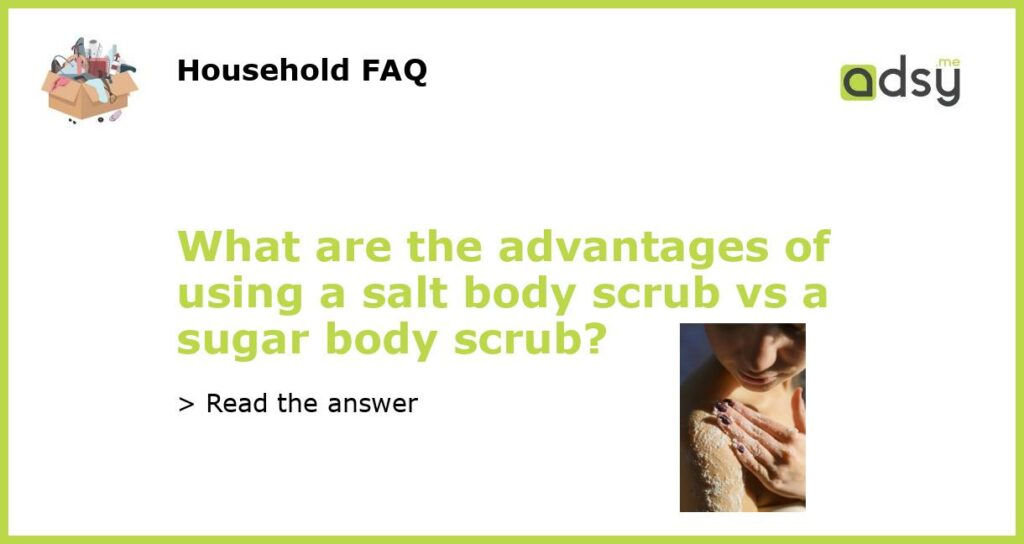Advantages of Using a Salt Body Scrub vs a Sugar Body Scrub
Body scrubs have been used for centuries to exfoliate dead skin cells and promote new cell generation. They’re an excellent way to improve skin texture, boost blood circulation, and give an overall glow to the skin. There are several types of scrubs used to do the job, but two of the most popular types are salt and sugar scrubs.
The benefits of using a salt body scrub
Salt scrubs have become increasingly popular in recent years thanks to their numerous benefits. Salt is an excellent natural exfoliant that effectively removes dead skin cells from the body. It’s also incredibly detoxifying, making it perfect for those who want to eliminate toxins from their skin. Salt scrubs are also more abrasive than sugar scrubs, which makes them ideal for scrubbing rougher areas such as elbows, knees, and heels.
The benefits of using a sugar body scrub
Sugar scrubs, on the other hand, tend to be gentler on the skin as they dissolve easily when they come into contact with water. They also contain glycolic acid, which helps to break down dead skin cells, making them easy to remove. This type of scrub is ideal for those with sensitive skin or those looking for a milder exfoliating experience.
Which body scrub is best for your skin?
The type of body scrub you choose will depend on your skin type and the effect you want to achieve. If you’re looking for a more intense exfoliation, then a salt scrub may be your best bet. However, if you have sensitive skin, a sugar scrub will be gentler on your skin.
Both salt and sugar scrubs offer numerous benefits and are excellent for exfoliating the skin. However, the choice between the two depends on personal preference, skin type, and the desired outcome. Ultimately, the best body scrub for your skin is the one that makes you feel good and helps you achieve your skincare goals.






